Why Colors Sometimes Clash.
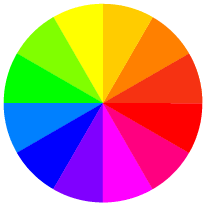
We choose color every day — a blouse to match the skirt, a carpet for the sofa, flowers for the table. Some combinations work, others don’t. Why? And how can we find the ones we like?

Learning to analyze color helps us understand why we like what we do. That in turn lets us better use color as a communication tool in web sites, photographs, brochures and presentations.
Science and Art. Color has many aspects: How it is created and how we see it;1 Why red, white and blue stir patriotic feelings in most Americans; Why some colors go together better than others? The latter is our topic today.
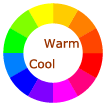
Organizing Color. Artists like to arrange colors in circle to view their relationships, a practice begun by Sir Isaac Newton.2 They take red, yellow and blue3 and combine each with the others to produce orange, green and violet. Each of those six is combined with its neighbors to make a total of twelve.
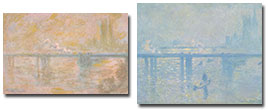
Warm or Cool? Looking at the wheel, certain patterns emerge. For example, the colors near red and yellow seem “warm,” while those on the opposite side are “cool.” The effect can be seen in two paintings of Charing Cross bridge by Claude Monet. The works are nearly identical in composition, but feel quite different.
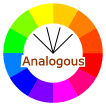
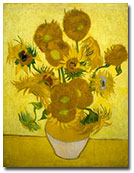
Analogous Colors. Adjoining colors on the wheel create what artists call an analogous color scheme. The colors seem to go together since they have something in common. For example, all the colors in Van Gogh’s Sunflowers contain yellow.
Analogous color schemes usually match well and create comfortable designs. Designers often recommend having one color dominate and the others support. For example, yellow dominates in Sunflowers.
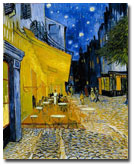

Complementary Colors. Opposites attract — that’s the idea with complementary colors, colors from opposite sides of the wheel. Van Gogh’s cafe painting uses this scheme. Since cool colors (blue here) tend to recede while warm colors (yellow and orange) come forward, the painting seems to invite us to take a seat on the terrace.
Complementary schemes provide contrast and draw attention.
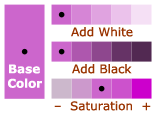
Tints and Shades. Once we have chosen a color, we can vary it by adding white and black. We can also adjust its intensity, sometimes called saturation.
How Do I Choose? We have just scratched the surface; color is very complex. If formulas were enough, a spreadsheet could make anyone Michelangelo.
So where do we start? Luckily there are many web sites that help us build and visualize color schemes. Here are two:
Adobe Kuler. On-line application. Lets you pick starting color and type of scheme, then generates colors, which you can adjust and save. Also generates color schemes from uploaded photos.
ColourLover. Lots of user-contributed sample palettes, great for ideas. Also has tools to create your own colors and patterns.
What looks good is personal taste; It’s OK for colors to clash if you want them to.
-----
- See Why Is Red, Red.
- Newton’s drawing of the color wheel is on Cambridge University’s web site.
- This is the traditional color wheel used by artists. The primary colors for on-screen graphics — red, green and blue — are different because on-screen colors are created by a light source (monitor) rather than reflected light. See Why Is Red, Red.
- Both paintings of Charing Cross Bridge are by Claude Monet. Left, 1902, The National Museum of Western Art, Tokyo. Right, 1899, Museo Thyssen-Bornemisza, Madrid.
- Van Gogh’s Sunflowers (1889). Van Gogh Museum, Amsterdam. Detailed image available on-line at Google Cultural Institute.
- Van Gogh’s Café Terrace at Night (1888). Kröller-Müller Museum, Otterlo, Netherlands.
This article originally appeared in our free semi-monthly newsletter. To receive future issues, please add your name to the subscription list.

